 |
  St Augustine Square On one of my trips to Disney, I saw a beautiful tile floor in a St Augustine business. I just knew it was a quilt waiting to be made The colors are pretty much as I've made my sample block. I snapped a photo with my cell phone and the next time I had access to my computer on I drew the tile in Electric Quilt. I found the block in Block Base under two different names, Peek-a-Boo published by Joseph Doyle in 1911 and Broken Wheel published by Clara Stone in 1906. You may decide for yourself which name to use for your project. I decided to use the block as a Mystery For Relay and called it St Augustine Squares. At the bottom of the page are a few pictures of mystery quilts either finished or in progress. |
If you are making one block or a whole quilt, the hardest part of this pattern to me is telling you which fabrics to use. I have played with the design in Electric Quilt, and almost any combination of colors works. I have used all darks, and all lights and mediums too. And I have used a mixture of colors. They all work and each combination shows me a unique design element. That said, I do not think this pattern is a suitable scrappy pattern.
| This block will have a 4 1/2 inch (4 inch finished) center square (color two), so if you have a fabric with a design on it that you would like to use, you may. One with a directional design would be suitable if you are one of those people who doesn't like things upside-down. You can pull your other colors from that center square. For one 12 1/2 inch block you need one 4 1/2 inch center square of color two. Color one and two you may want to coordinate or at least make them complimentary to each other. I am using a medium orange for my color one, and a pale yellow for color two. For one 12 1/2 inch block you need four 4 1/2 inch squares of color one. Colors three and four would probably be considered the background fabrics on this block. I am using two different tan-on-tans. I tried these backgrounds as two different darks in Electric Quilt and that worked also. The most important thing to remember for colors three and four is that they have the same value, either light, medium or dark. For one 12 1/2 inch block you need eight 2 1/2 inch squares of both colors three and four. |
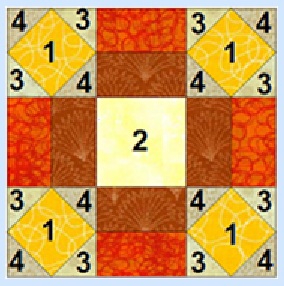 |
Colors five and six need to be different from the rest, but still complimentary. I used a darker orange and brown for my colors five and six.
For one 12 1/2 inch block you need four 2 1/2 by 4 1/2 inch rectangles of both colors five and six.
Take all of your color three and four 2 1/2 inch squares and mark a line on the back side diagonally through the middle as shown. Or, since they are such small blocks, you can finger press them like I do. That line will be a sewing line.

Using a color #1 square and two color #3 squares sew a color three square on opposite corners of your color one square as shown here. Place the squares so raw edges meet, then sew on your diagonal line. Trim excess, leaving at least 1/4 inch seam allowance. Press to the larger square. Repeat on the opposite corner.


Next sew your rectangles together. Put a five and six right sides together, sew a 1/4 inch seam, press to the dark. Repeat for the remaining three pairs.
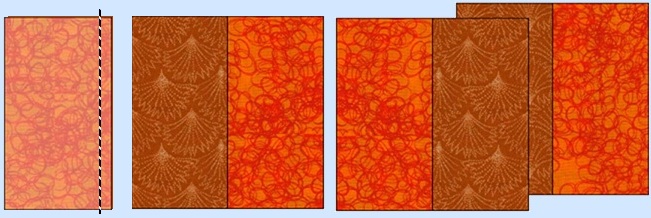
Now we'll start putting it all together. Pay close attention to the direction your colors go; you want them all to look the same. It matters which way the colors three and four go. You want them to go the same on each unit as shown below. If on one unit color three is next to the center, then you want color three to be in the center on all of your units. And if color four is next to the center, same thing.
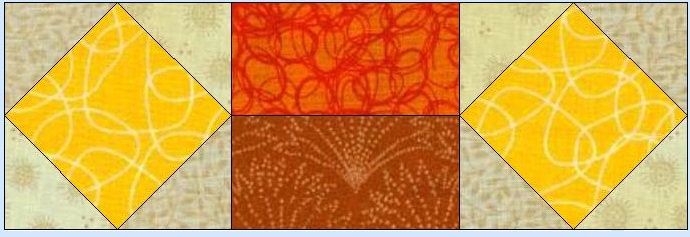


Time to make a design decision, no big deal really, just a matter of choice. If you turn your rows, you will see that you have made two different looking units, depending of course on how close your fabrics three and four are. You need to decide which color you want to be in the center of your squares, either color five or six, depending on which way you turn the above units. Pair them up as I have and decide which color you want to be at the center, either five or six.
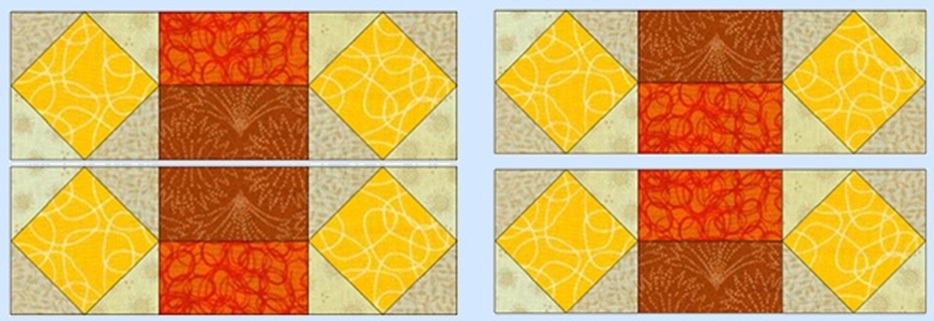
| Next sew the remaining five and six color squares to either side of your color two 4 1/2 inch squares. Make sure that color you decided to be the center fabric is next to the color two (center) square. |
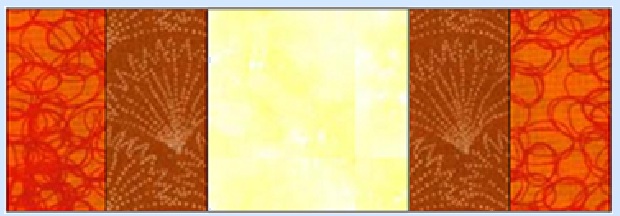 |
And here's what my quilt would have looked like if I'd ever made it, just like that floor in that St Augustine shop.
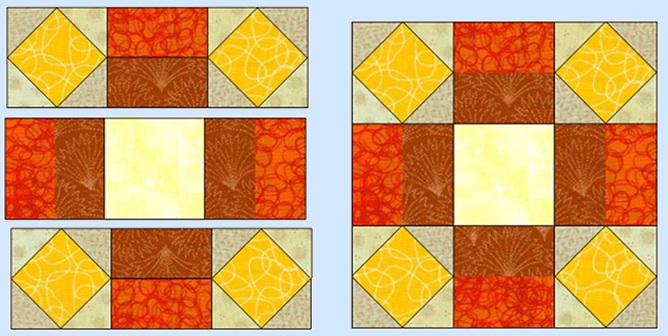
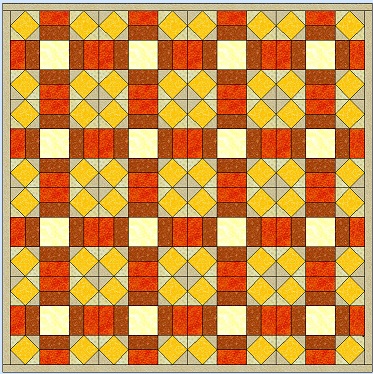
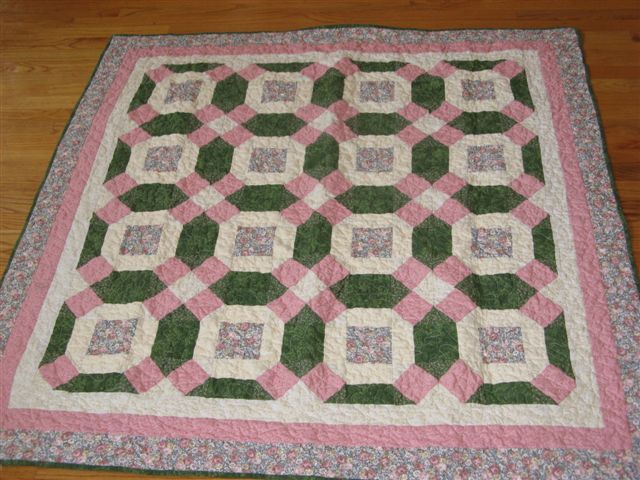

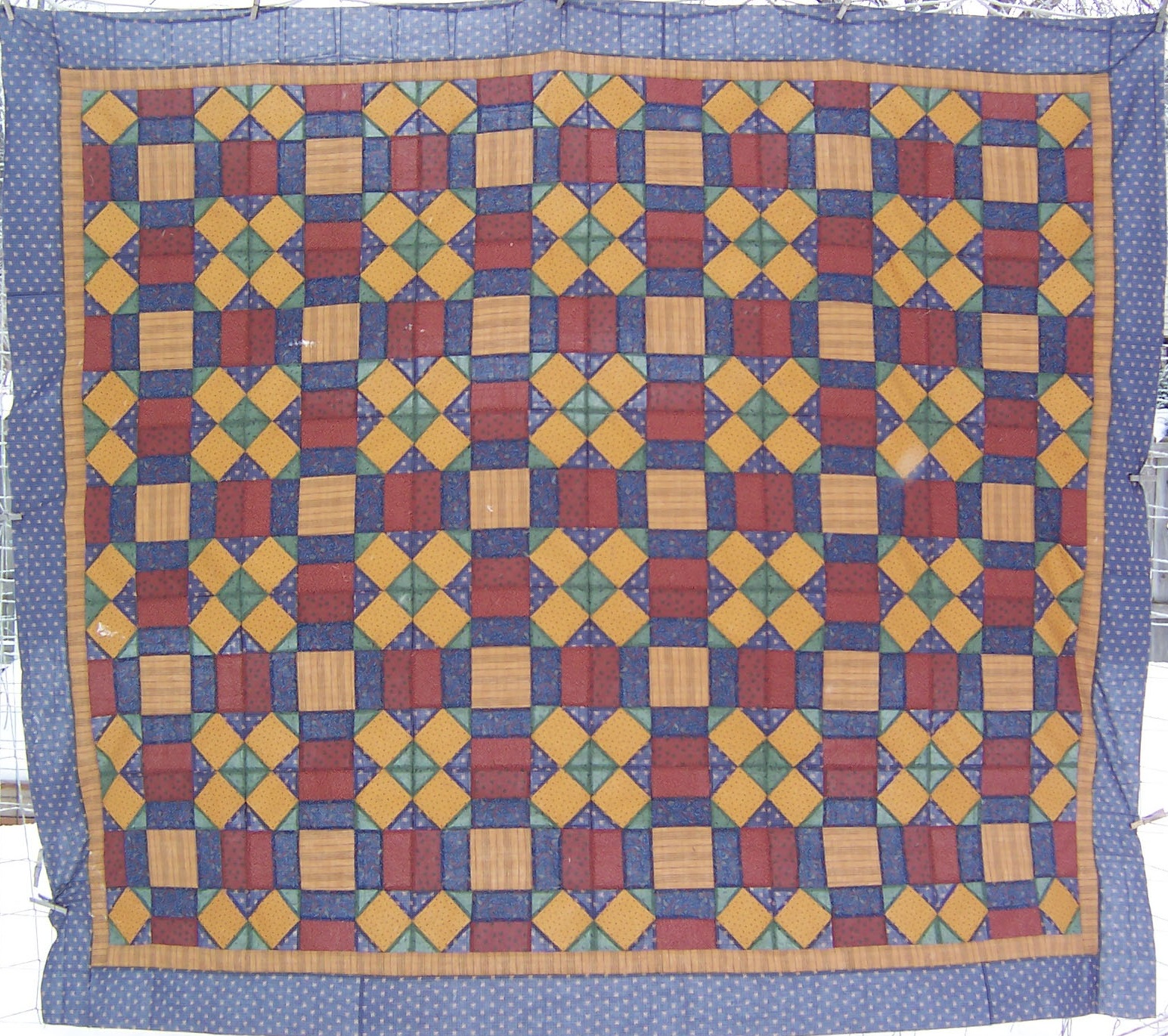
without the owner's permission. This includes the patterns as well as any graphics and/or instructions that are associated with a pattern.
The content on these pages, including text and images are the sole property of the Delaware Quilts and may not be used in any manner without consent. All Rights Reserved.
Posted , 2025
|Home| Quilts| Email|